Recent Articles
Popular Makes
Body Types
2017 Chevrolet Cruze Hatchback Road Test and Review
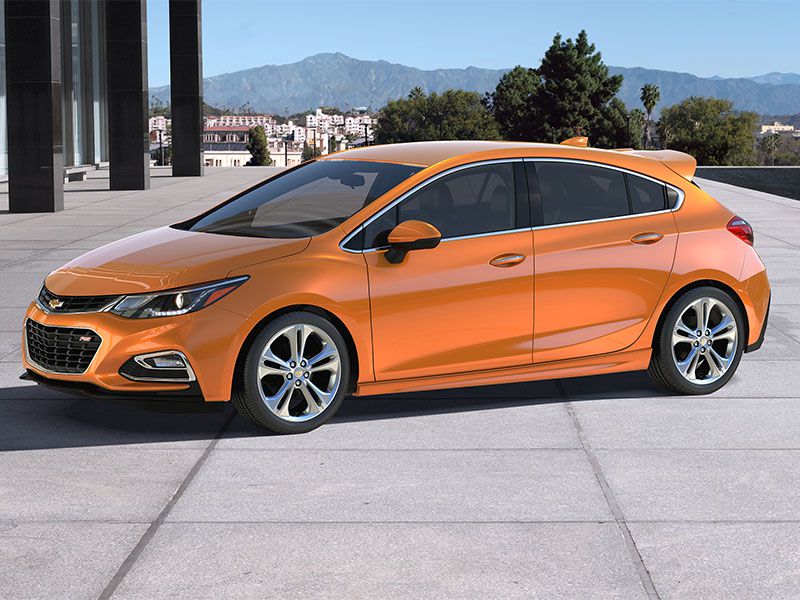
2017 Chevrolet Cruze Hatch exterior hero ・ Photo by Chevrolet
The concept of a small automobile with five access ports—four doors and a top-hinged portal at the rear—is hardly new. Volkswagen popularized the body style with the introduction of the Golf (nee: Rabbit) in 1974, and there have been many variations since. But even though hatchbacks dominate in Europe’s small car segment, particularly in the northern countries, American buyers have resisted them, preferring formal sedans—so-called three-box styling versus two-box designs. This is still true. According to General Motors research, compact hatchbacks account for only 350,000 sales per year in the US, in a market of about 17 million vehicles. Given the boom in small crossover SUVs such as the Mazda CX-3, which is just a smidge bigger than its Mazda 3 compact hatchback counterpart, this is a little mystifying. Still, GM sees expansion—and consequent opportunity—in the compact hatch market. And that’s what this new version of the Chevy Cruze is conceived to exploit.
Not Quite New
Hatchbacks are certainly not unknown at Chevrolet—consider the subcompact Sonic and the new Bolt electric. But they’re a rarity in Chevy’s compact offerings, even though crosstown rival Ford has offered a hatchback version of the Focus for years. Then again, it’s also rare for GM to refrain from offering its own version of a Ford product, something that’s true the other way round. However, while a hatchback is new to the Cruze range in the US, it’s not new to GM worldwide. The body style was added to the Cruze’s European lineup for the 2012 model year. This is not to say the US version is an exact carbon copy of its Euro counterpart. The structure, based on the Opel Astra, and general shape is the same, but there are a few small engineering distinctions. Still, starting with an existing body shell made the project far easier—and less expensive—to bring to market.
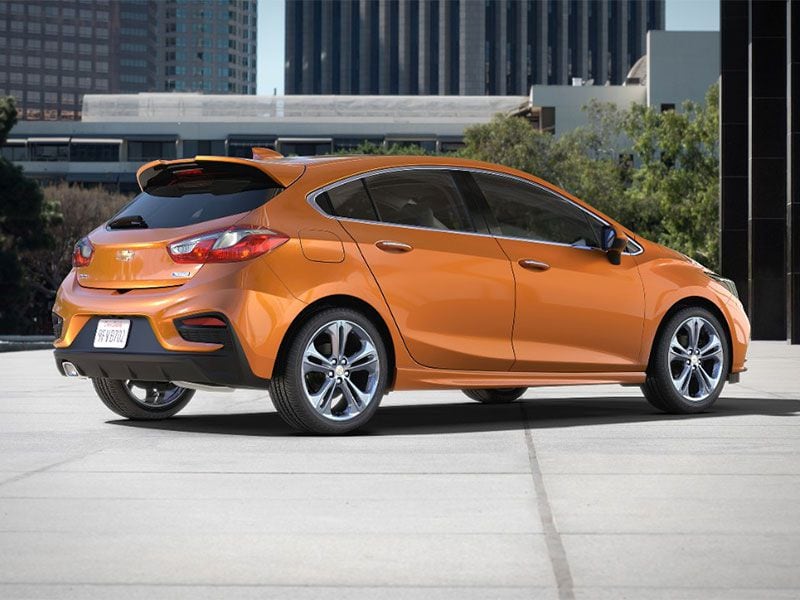
Photo by General Motors
Dimensions and Volumetrics
Like all hatchbacks with sedan counterparts, the Cruze Hatchback is shorter than the formal sedan. Wheelbase dimensions—106.3 inches—are identical for both cars, and width (70.5 inches) and height (57.7) are within a tenth of an inch. But at 175.3 inches, the hatch is 8.4 inches shorter. And like all hatchbacks with sedan counterparts, the Cruze hatch can swallow a lot more stuff. The trunk of a Cruze sedan is pegged at 14 cubic feet—pretty good by compact car standards. But it’s mini compared to the hatchback, which boasts almost 23 cubic feet behind the rear seats. Flip those seatbacks forward and cargo capacity expands to just over 47 cubic feet. And that, of course, is what hatchbacks are all about: versatility. For perspective, the basic cargo capacity of the Cruze Hatchback is about the same as the Volkswagen Golf, the volumetric champ among compact hatchbacks. But it’s more spacious than the standard cargo holds of either the Mazda 3 or Ford Focus. With seatbacks folded forward, the Cruze’s capacity is about the same as that of the Mazda, and a couple cubic feet greater than the Ford’s. (At 53 cubic feet, the Golf’s capacity trumps all the others.)
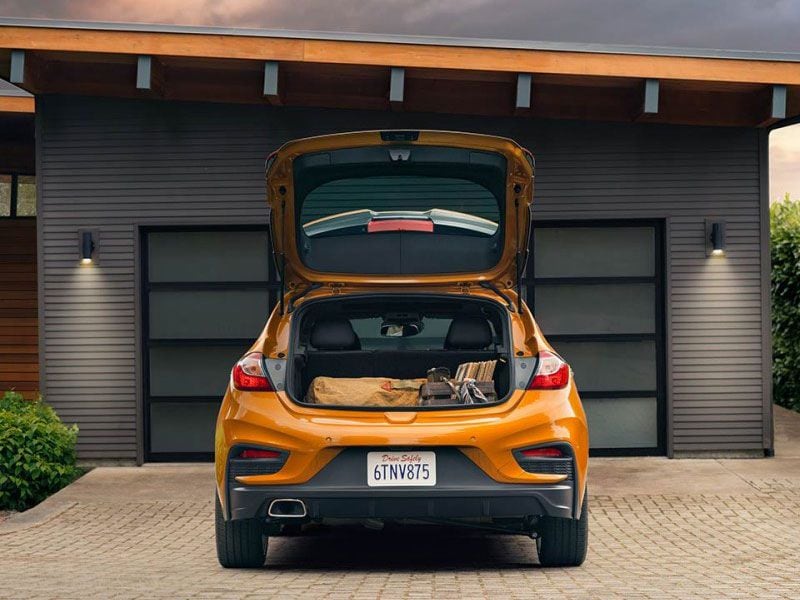
Photo by General Motors
Crashworthiness
Like the sedan, the new Chevrolet Cruze Hatchback has enough airbags—10—to cushion a lunar landing, as well as a standard rearview camera. Beyond that, safety features cost extra. Chevy’s Driver Confidence Package (rear park assist, blind spot alert, lane change alert, rear cross-traffic alert) adds $865 and is not available with a manual transmission. Driver Confidence II (automatic high beam control, forward collision alert, following distance monitor, lane departure warning, lane keeping assist) is an additional $790. Cruise control is standard, but lacks an adaptive feature, as well as an autonomous emergency braking feature. As of this report, the Cruze Hatchback had yet to receive National Highway Traffic Safety or Insurance Institute for Highway Safety ratings.

Photo by General Motors
Modest Muscle
Like the sedan members of the Clan Cruze, the Hatchback is propelled by a turbocharged 1.4-liter 4-cylinder engine. This is a relatively new engine that Chevy put to work as part of the recent Cruze redesign. It’s lighter than the 4-cylinders it replaces—a non-turbo 1.8-liter and turbo 1.4—and huffs up 153 horsepower and 177 pound-feet of torque. Those output numbers represent gains of 15 hp and 29 lb.-ft. over the previous turbo four, bringing the Cruze a little closer to something like power parity with the compact hatchback pacesetters—Ford Focus, VW Golf, and new Honda Civic, which will roll into showrooms later this fall. It does not, however, approach the grunt available in some of the really hot hatches in this class—Focus ST, Focus RS, VW Golf GTI, and VW Golf R. On the other hand, next year Chevy will give the Cruze something the others lack—a diesel option, paired with a 9-speed automatic transmission. In the meantime, the Chevrolet Cruze Hatchback carries EPA fuel economy ratings of 28 or 29 MPG city, 37 or 38 MPG highway, depending on trim. This is a little lower than the sedan's ratings, which suggests higher curb weights.
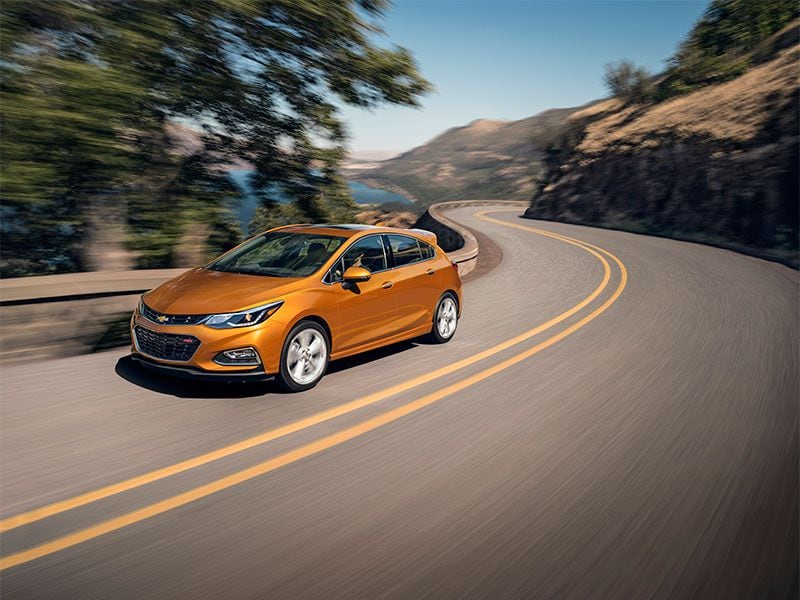
Photo by General Motors
Firm Foundations
Structural rigidity is a strong suit of the Chevrolet Cruze Sedan, a key element in dynamic development and crashworthiness. Sustaining that factor was a prime objective of the Hatchback development team. This entailed more than simply altering the body shell aft of the B pillars. The bulkhead that separates the trunk from the sedan’s passenger cabin also adds strength to the entire body shell, and of course it’s absent in the Hatchback. The Hatchback chassis team compensated for the absence of the trunk bulkhead with additional stiffening in the rear quarters. What this does to curb weights is unknown—Chevy has yet to publish numbers—but to that infallible handling assessment system, the gluteus maximus, the Cruze Hatchback feels very solid indeed. If there’s a distinction between Cruze Hatchback and Cruze sedan, it’s subtle. Chevy also installed a more sophisticated rear suspension setup in the Premier model, substituting a Watt’s linkage for the basic beam axle. What this does for handling would require a test track and instrumented data to sort out, but we can say that the Premier is a smooth operator on all sorts of surfaces.
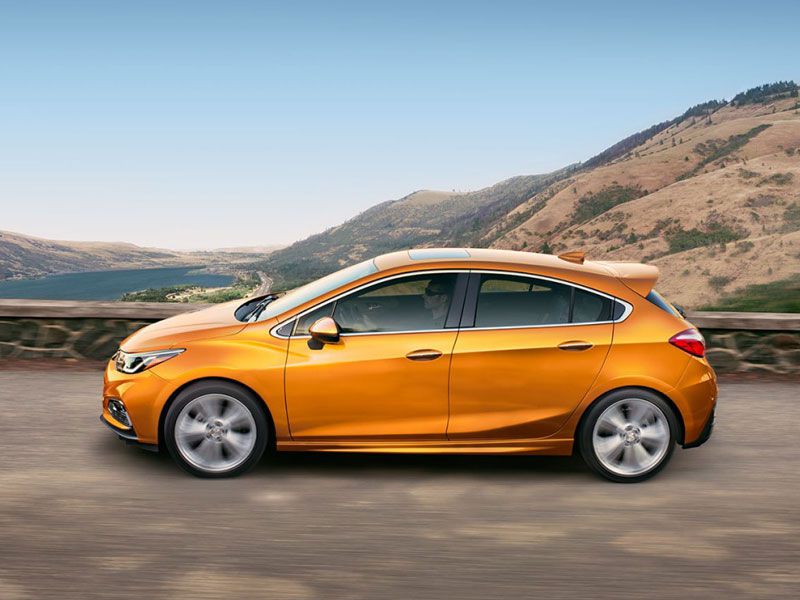
Photo by General Motors
Shhhh!
Quiet operation is another Cruze Sedan virtue that Chevy wanted to preserve in the Hatchback. This is more of a challenge than it may seem at a glance. The bigger rear cargo hold that gives hatchbacks their versatility also creates noise suppression problems. There’s no bulkhead separating trunk from cabin, and as a consequence the hatchback’s cargo space can become a big amplifier for road noise. The development team addressed this issue with additional sound-deadening material, and the work pays off with an exceptionally quiet cabin at all speeds on all surfaces. If there’s an interior noise distinction between the Cruze Sedan and Hatchback, it would require very sensitive sound measuring gear to detect.
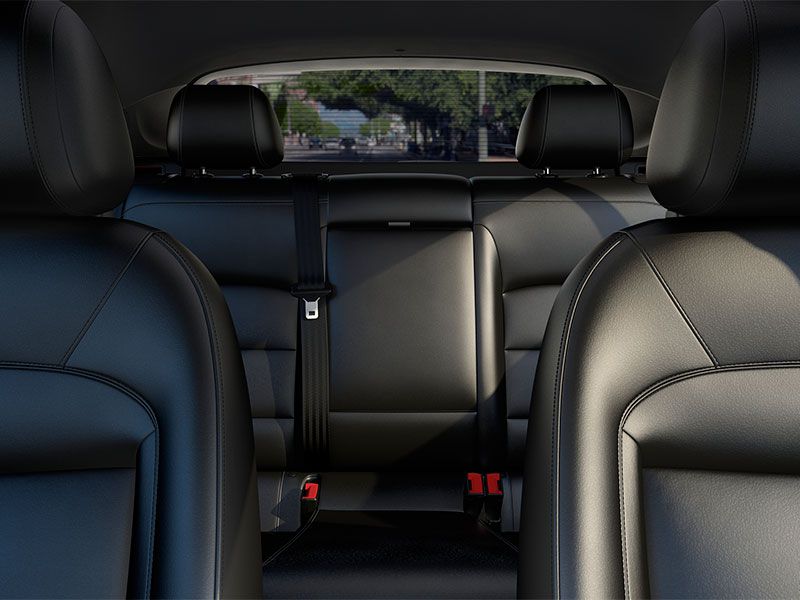
Photo by General Motors
Lookin’ Good
It’s not unfair to say that the most appealing element of the Cruze Hatchback is what meets the eye. With its sculpted flanks, upsweeping character lines, muscular flanks, and forward-slanting hatch, the new Chevy is arguably one of the snazziest rides in its class. It looks even hotter with the optional RS package—sportier front and rear fascias, deeper rocker panels, fog lamps, 18-inch wheels (on the Premier trim), and a bigger spoiler at the rear of the roof ($635 in the LT, $995 with the Premier). But heat is in the eyes of the beholder here. The RS package contributes exactly zero to the car’s performance.
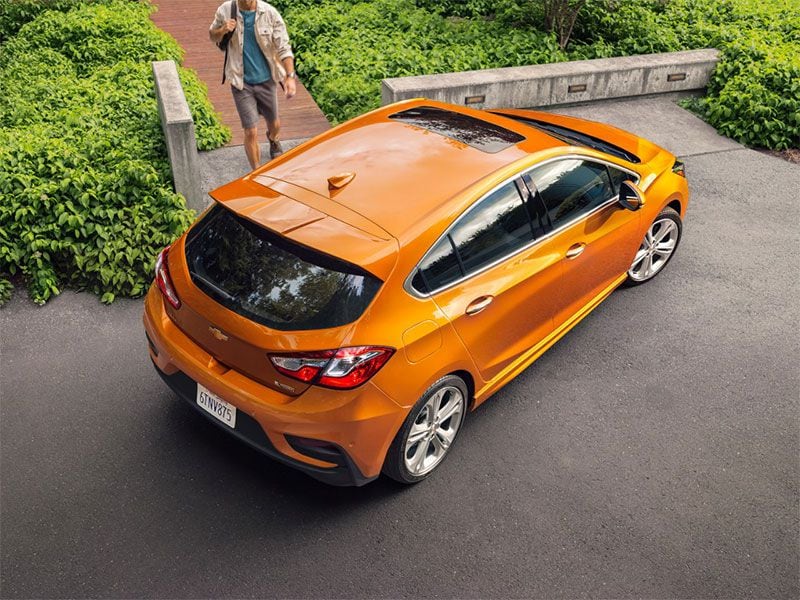
Photo by General Motors
Hold the Excitement
What are your dynamic expectations for your car? Do you view the act of driving as something that, given the right circumstances, can be entertaining? Or is the car simply a means to an end, point A to point B? If it’s the latter, the behavior of the Cruze Hatchback is a good choice, with a dynamic experience that falls squarely between ho and hum. Exactly like the Cruze Sedan, in fact. The chassis is solid, ride quality is supple, steering is a little vague though nicely weighted, and as noted interior noise levels are on par with the sedan, which is to say very low by compact standards. There are no nasty surprises, and the Cruze is certainly competent in all dynamic areas. On the other hand, responses in quick maneuvers are unhurried. Understeer—the tendency of a vehicle to resist turn-in as a function of speed—ranges from modest to mulish, and the power of the 1.4-liter turbo rates as merely adequate. The 2017 Chevrolet Cruze Hatchback looks hot, particularly with the RS cosmetic package, but sporty is only skin deep here.
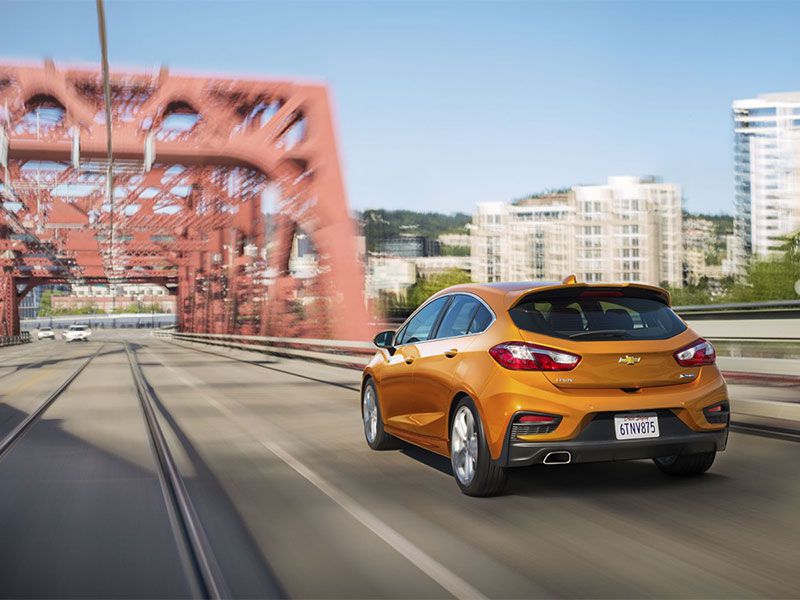
Photo by General Motors
Premium Price
Chevrolet Cruze Sedan pricing starts at just under $17,000, but the hatch is at the high end of the ladder, offered only in the top two trims, LT and Premier. The bidding begins with the LT manual, at $22,115, which includes the standard $875 destination charge. The manual also includes the $635 RS sport appearance package. The 6-speed automatic transmission adds $680 to the LT price.
The Premier trim (automatic only) is $24,820. Add $995 for the RS package with the Premier model.
While the pricing is premium compared to a base Cruze Sedan, the Cruze hatchbacks include a goodly collection of comfort/convenience features. For example, the Premier trim includes 17-inch alloy wheels, heated front seats, power-adjustable driver seat, tilt/telescope steering column, and 6-speaker audio.
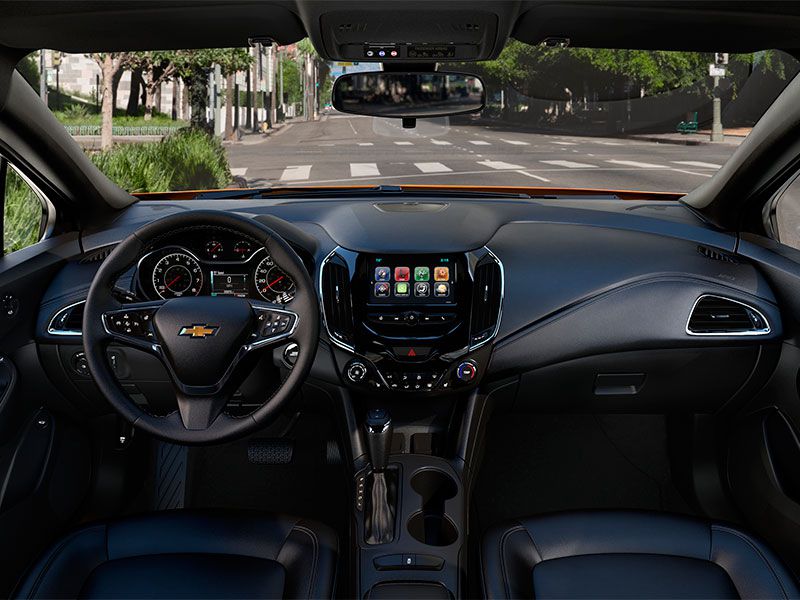
Photo by General Motors
The Bottom Line
From a dealer perspective, the Chevy Cruze Hatchback is undoubtedly a welcome addition to the Cruze lineup. It sustains all the virtues of the sedan—quiet operation, a high comfort index, attractive interior with adult-size rear legroom, respectable fuel economy, and solid construction. And it adds the versatility that goes with this body style. Like the sedan, it’s not the kind of car that lures its owner to winding country roads for the sheer fun of driving. The dynamic experience is competent but bland. On the other hand, the Hatchback doesn’t look bland. Add the RS cosmetics, and it looks like pretty hot stuff. For many, that will be hot enough.
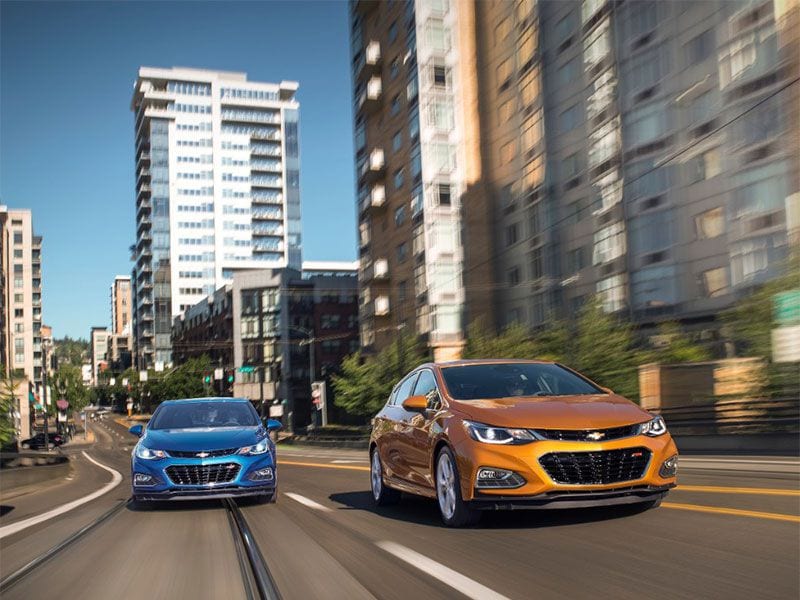
Photo by General Motors